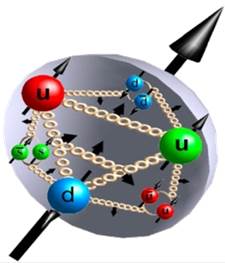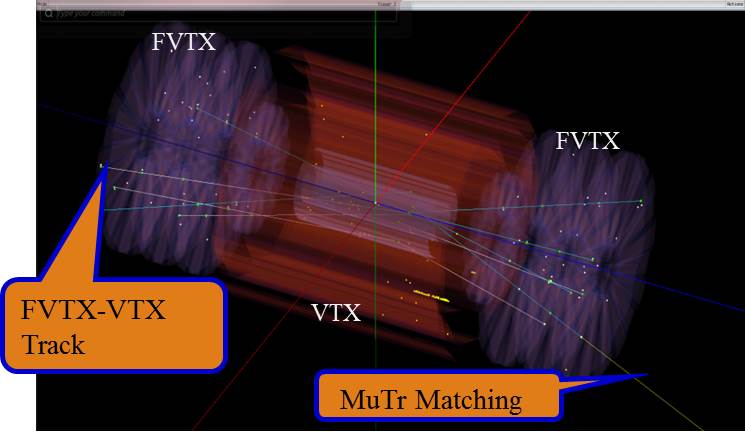 The field of Nuclear Physics has traditionally been seen as the study of the nucleus of atoms, and more specifically, of heavy nuclei
and how their composition from the building blocks of protons and nuetrons is determined by the "nuclear force".
The field of Nuclear Physics has traditionally been seen as the study of the nucleus of atoms, and more specifically, of heavy nuclei
and how their composition from the building blocks of protons and nuetrons is determined by the "nuclear force".
However, today it is understood that the nuclear force is an emergent phenomena of the strong force, and to understand the composition of heavier nuclei, one must also understand the structure of the proton and neutron in terms of their building blocks, the quarks and gluons. In order to probe these fundamental particles, high energy collisions are required.
At UNM our program involves one of two large experiments at the worlds' only polarized proton collider, RHIC. The PHENIX Experiment is a multi-purpose collection of detectors designed to look for rare events in p+p collisions ranging in energy from 24 GeV to 510 GeV (center- of-mass energy) and in heavy-ion collisions (d-Cu, d-Au, Cu-Cu, Au-Au) with energies up to 200 GeV (pernucleon center-of-mass energy). We have made significant contributions to the understanding of the physics of the strongly coupled quark-gluon plasma and to the polarized parton (quark, antiquark and gluon) contributions to the spin of the proton.
There is a strong overlap between nuclear physics, particle physics, astrophysics and astronomy. For instance, astronomical observations of neutron star candidates can lead to a better understanding of the equation of state of dense nuclear matter. Conversely, experiments which probe hot and dense nuclear matter (for instance at RHIC), can lead to better models of the early universe.
NUPAC at UNM takes advantage of this synergy to create a strong cross-disciplinary research program. Additionally, our collaborations with Los Alamos National Lab has enabled our deep involvement with hardware projects like the Forward silicon Vertex tracker (FVTX), which will enable a new set of measurements at PHENIX.
